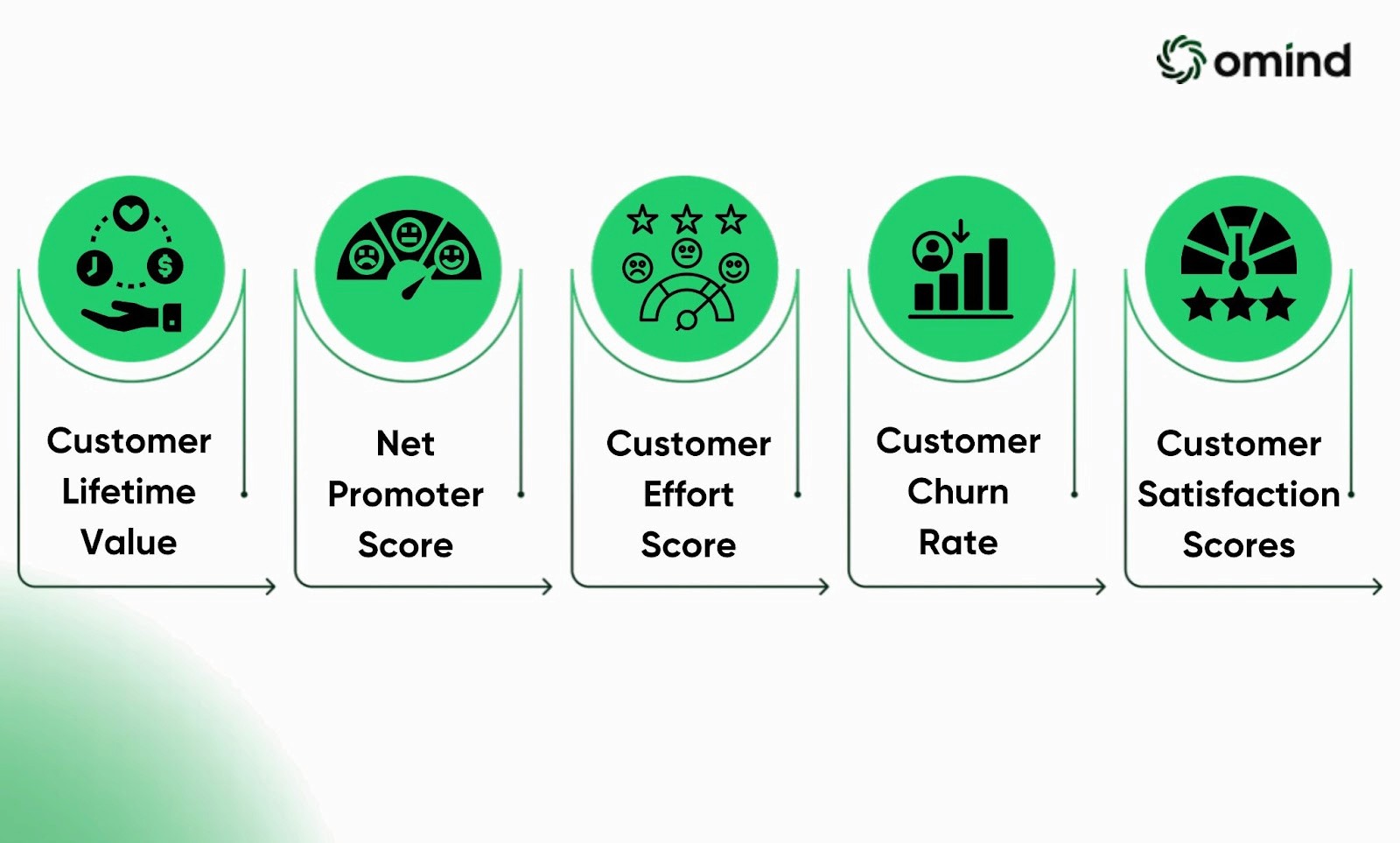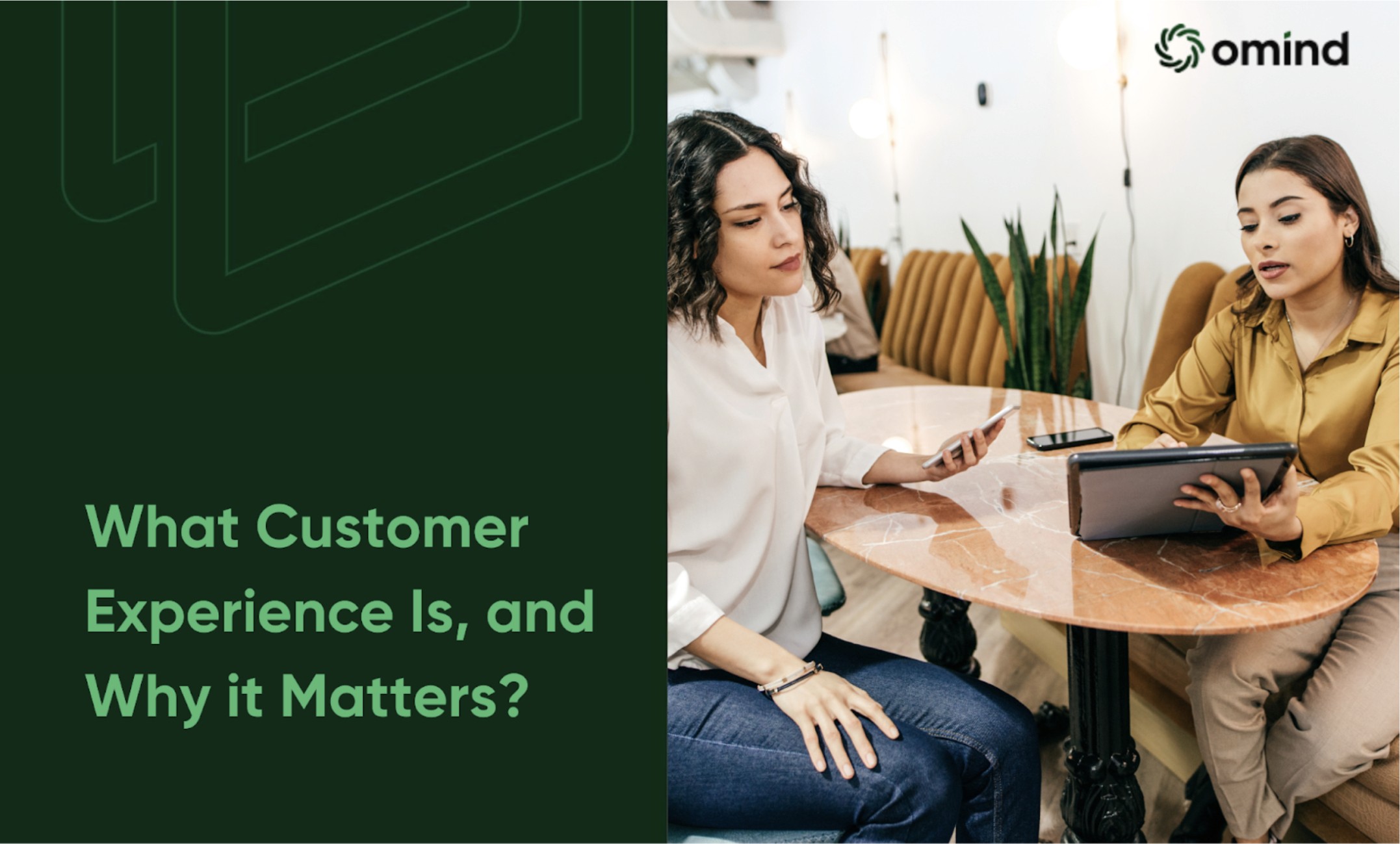The cornerstone of every sale a business makes is the quality of overall interaction a customer has with the brand. It’s no surprise that amongst a surveyed cohort, 72% of companies are investing in CX in 2023. Customer Experience is the foundation of a business as we know it, and it’s imperative that businesses understand how to garner good CX and build lasting relationships with their customers. In this article, we’ll talk about the essentials of CX, along with some guidelines on building a good CX strategy.
CX, Defined
CX encompasses the entirety of interactions a customer has with your company, throughout their entire journey. This includes everything from the initial brand awareness stage to pre-sale research, the purchasing process, after-sales service, and ongoing interactions.
You might think, “Isn’t this just another term for customer service?”. While customer service is definitely a crucial part of CX, it's not the whole picture. Customer service focuses mostly on issue resolution, whereas CX considers the entire customer lifecycle. There is an emotional and qualitative connotation attached to both, but CX is a much broader subject.
Creating a positive emotional connection is key to enhancing CX. Happy customers are more likely to become loyal brand advocates, spreading positive word-of-mouth and boosting your reputation. Imagine a bank that goes the extra mile to resolve a fraudulent transaction quickly and efficiently. Not only will the customer be satisfied with the solution, but they'll also appreciate the bank's empathy and proactive approach, fostering a sense of trust and loyalty.
So how does CX influence your long-term strategy and overall success? Here's how:
Strategic Decision-Making: By understanding your customers' needs and pain points through CX feedback, you can make data-driven decisions about product development, marketing campaigns, and service improvements.
Customer Perception: A positive CX shapes how customers perceive your brand. They'll remember the ease of doing business with you, the helpfulness of your staff, and the overall feeling they get when interacting with your company.
Business Success: Loyal customers who have a positive CX are more likely to make repeat purchases, recommend your brand to others, and be forgiving of minor hiccups. This translates to increased revenue, brand growth, and a sustainable competitive advantage.
The Engine of Financial Growth
Studies consistently show a strong link between exceptional CX and improved financial performance. A McKinsey article reports that companies that adopted good CX outperformed their competitors by over 2x, between 2016 and 2021. Here's how CX translates to profit:.
Boosted Customer Lifetime Value (CLV): Happy customers become loyal customers. They spend more, repurchase more frequently, and are less likely to churn. This translates to a significant increase in CLV, the total revenue a customer generates over their lifetime.
Reduced Customer Acquisition Costs: Acquiring new customers is expensive. But with a stellar CX, you retain existing customers, reducing the need for constant customer acquisition efforts. Satisfied customers can even become brand advocates, attracting new customers organically through positive word-of-mouth.
Premium Pricing Power: When customers perceive your brand as trustworthy and reliable due to a superior CX, they're often willing to pay a premium for your products or services.
Standing Out in a Sea of Sameness

In commoditized markets, where products and services seem identical, CX gives you the potential to become the ultimate differentiator. Here's how a superior CX grants a competitive edge:
Building Emotional Loyalty: In a sea of similar offerings, exceptional CX creates an emotional connection with customers. They feel valued and understood, fostering loyalty that transcends product features alone.
Word-of-Mouth Marketing on Steroids: Positive customer experiences are shared. Social media and online reviews give disgruntled customers a platform, but they also empower happy customers to be your biggest champions. A strong CX strategy encourages positive online buzz, attracting new customers and outshining competitors.
Employee Advocacy: Happy employees deliver exceptional customer service. When your workforce feels valued and empowered, they become brand ambassadors themselves, providing an authentic and positive customer experience that sets your company apart.
Every Touchpoint Matters: Shaping Perception and Driving Sales
Every interaction a customer has with your brand shapes their perception and ultimately influences purchasing decisions. Here's why every touchpoint matters:
First Impressions Matter: From your website's user interface to the initial interaction with a sales representative, first impressions set the tone for the entire customer journey. A seamless and positive first touchpoint creates a foundation for trust and fosters a willingness to engage further.
The Power of Consistency: Inconsistency in CX creates confusion and frustration. By ensuring every touchpoint, from pre-sale to post-purchase, delivers the same level of quality and care, you build trust and solidify positive customer perceptions.
From Frustration to Advocacy: Even negative interactions present an opportunity.
How you handle customer complaints and resolve issues demonstrates your commitment to customer satisfaction. Turning a frustrated customer into a satisfied one through exceptional service recovery can create a loyal brand advocate out of a potential detractor.
A Look at Common CX Measurement Tools

CX can be measured through a variety of metrics, including qualitative ones as well. For now, the key metrics have been listed below, along with some guidelines on how to implement them properly.
Customer Satisfaction (CSAT) Scores:
CSAT is a short-term measure of customer satisfaction with a specific interaction. CSAT surveys are typically deployed immediately after an interaction (e.g., purchase, service call, website visit) and use a simple rating scale (e.g., stars, smiley faces) or a single satisfaction question. They provide a quick pulse on customer sentiment and help identify areas for improvement within specific touchpoints of the customer journey.
TIP: Move beyond a single satisfaction score. Utilize a multi-dimensional approach, gauging satisfaction with specific touchpoints like product quality, website usability, and customer service interactions. Track satisfaction over time to identify trends and pinpoint areas for improvement.Net Promoter Score (NPS):
NPS is a loyalty metric that measures customer willingness to recommend your brand to others. The core NPS survey consists of a single question: "How likely are you to recommend [your company] to a friend or colleague?" on a scale of 0 (not at all likely) to 10 (extremely likely). Respondents are then categorized as Promoters (scores 9-10), Passives (scores 7-8), and Detractors (scores 0-6).
TIP: Supplement your NPS score with open-ended questions to gather rich qualitative data. Explore text analytics tools to uncover recurring themes and categorize detractors' feedback by root cause (e.g., product issues, service inefficiencies). This allows for targeted improvement initiatives.Customer Effort Score (CES): CES is a metric that assesses how easy it is for customers to complete a task or resolve an issue. CES surveys typically use a simple rating scale and ask a question like: "How much effort did you have to put in to [complete this task]?" Lower CES scores indicate a smoother and more effortless customer experience, while higher scores suggest frustration and areas where processes can be streamlined.
TIP: CES is a valuable tool, but consider incorporating task-specific CES alongside the overall score. This granular approach helps pinpoint bottlenecks within specific processes, allowing for targeted streamlining efforts.Customer Churn Rate:
A key metric that tracks the percentage of customers who discontinue business with you within a specific timeframe (e.g., monthly, quarterly, annually). It's calculated by dividing the number of customers lost during the period by the total number of customers at the beginning of the period.
TIP: While churn rate provides a vital overall picture, segment churn by customer demographics, product usage patterns, and lifecycle stage. This segmentation enables you to identify high-risk customer segments and tailor retention strategies accordingly.Customer Lifetime Value (CLV) Analysis:
CLV analysis considers factors like average purchase value, purchase frequency, and customer lifespan. By segmenting customers by CLV, you can tailor marketing and retention strategies for high-value segments, focusing resources on customers who contribute the most to your bottom line.
TIP: Go beyond simply calculating average CLV. Explore RFM (Recency, Frequency, Monetary Value) analysis to segment customers based on their purchase behavior. This allows you to identify high-value customers who warrant personalized experiences and targeted loyalty programs.
Beyond the Numbers: Advanced Techniques for Uncovering Customer Sentiment
Beyond A/B testing and community forums, consider these advanced techniques to glean deeper customer insights:
Customer Journey Mapping: Develop a detailed map of the customer journey, identifying all touchpoints a customer has with your brand. This allows you to pinpoint potential friction points and opportunities to enhance the CX at each stage.
Usability Testing: Conduct user testing sessions with representative customer segments to evaluate the usability of your website, mobile app, or self-service tools. Identify areas that cause confusion or frustration and implement improvements to streamline the user experience.
Sentiment Analysis with Social Media Listening: Utilize advanced sentiment analysis tools to analyze vast amounts of social media data and customer reviews. This allows you to identify emerging trends in customer sentiment, track brand mentions, and proactively address negative feedback.
The Power of the Frontline: Engaging Customer-Facing Staff
Train your customer service representatives to become active participants in CX improvement initiatives.
Skills Development: Invest in training programs that equip customer service representatives with the skills to effectively handle customer inquiries, resolve issues efficiently, and navigate challenging customer interactions.
Performance Measurement: Move beyond traditional call center metrics like average handle time. Integrate customer satisfaction metrics like CSAT scores into performance evaluations to incentivize delivering exceptional service.
Empowerment and Recognition: Enable customer service representatives to go the extra mile for customers within defined parameters. Recognize and reward exceptional service that fosters positive customer experiences.
Good CX: Where Smiles Outweigh Sighs

Positive customer experiences leave a lasting impression. Here's what defines them:
Effortless Interactions: From a user-friendly website to a seamless checkout process, customers appreciate experiences that flow smoothly.
Empathy and Understanding: Feeling valued and heard is key. Knowledgeable and friendly customer service representatives who listen and address concerns with empathy create positive interactions.
Personalized Touches: A little personalization goes a long way. Remembering customer preferences, offering targeted recommendations, or a simple birthday greeting can elevate the experience.
Proactive Problem-Solving: Anticipate customer needs and address potential issues before they arise. This demonstrates a commitment to customer satisfaction and builds trust.
Going the Extra Mile: Exceeding expectations creates lasting positive memories. A surprise upgrade, a handwritten thank you note, or genuine concern for a customer's well-being can transform a good experience into a great one.
Bad CX: A Recipe for Customer Defection
On the other hand, negative customer experiences leave a bitter taste and can damage brand reputation. Here's what to avoid:
Friction at Every Turn: A confusing website, long wait times, and a lack of self-service options all contribute to customer frustration.
Inefficient Service: Unknowledgeable or unhelpful customer service representatives leave customers feeling unheard and unresolved.
Broken Promises: Overpromising and under-delivering destroys trust. Set realistic expectations and follow through on commitments.
Inconsistency in Quality: A good experience followed by a bad one creates a jarring disconnect. Strive for consistent quality across all touchpoints.
Apathy and Indifference: Treating customers like numbers instead of individuals breeds negativity. Personalization and genuine care go a long way.
The Takeaway: Every Interaction Matters
Customer experience is the sum of all interactions a customer has with your brand. By focusing on creating positive and consistent experiences at every touchpoint, you can build lasting customer relationships, foster loyalty, and propel your business to success. Remember, even the "must-do's" of CX can make or break a customer's journey. So prioritize the basics, strive for consistency, and watch your customer satisfaction, loyalty, and brand reputation soar.
Omind is a CX and BX platform that leverages the best of industry knowledge, AI, ML, and more proprietary prowess to help you engage in the best way possible. If you’d like to learn more about how you can augment your composable commerce experience with us, schedule a demo today.
AUTHOR
Team Omind
Empowering Businesses with Unified Customer Experience Platform, Leveraging Advanced AI and Intelligent Automation
PRODUCT
Unified CXM
Share LINK
Related Blogs




